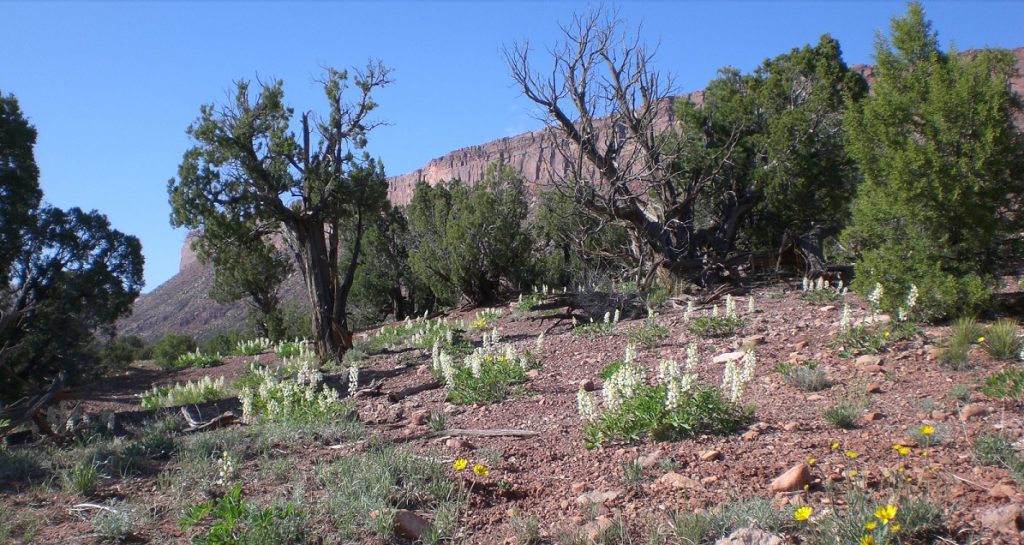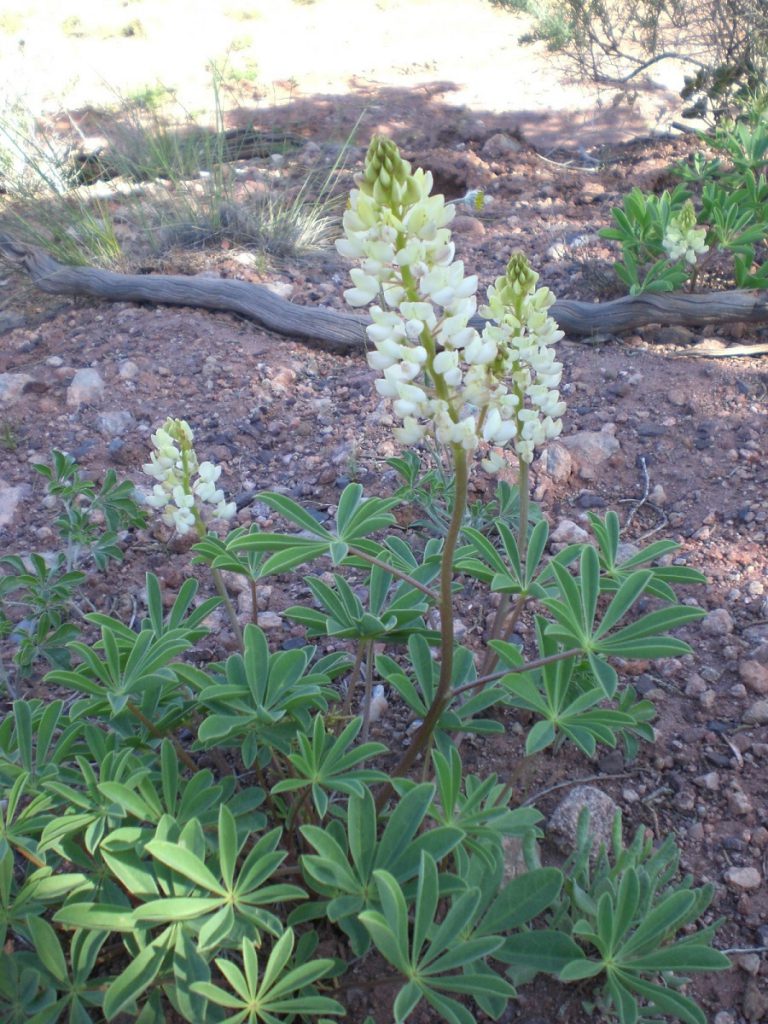By: Sierra Crumbaker
(Colorado Natural Heritage Program)
Payson Lupine
Nothing, arguably, could represent CNHP and its mission more than a species that is found nowhere in the world except Colorado. Payson lupine (Lupinus crassus) is one of these rare species, found only in Montrose County and given an imperilment rank of G2/S2 due to its small numbers and narrow distribution. Locations are tracked by CNHP and further details can be found in the Colorado Rare Plant Guide.
With its light-colored petals and hues ranging from white to pink with purple tips (unlike most lupine species, which are usually solid blue-purple), this lupine adds a touch of color to the dry, shale soils in the pinyon-juniper woodland it calls home. Once you know where to look, Payson lupine can be spotted by its winding stems along the ground that form large clumps. Multiple flowers shoot straight up from these bunches in May to June.
With the abundance of diversity found throughout the state, it’s exciting to have a species entirely unique to a less-than 200 square mile area in Colorado — but it also highlights the importance of protecting rare plants and animals that could be lost for future generations if we fail to recognize their values.

Payson lupine in its pinyon-juniper woodland habitat. (Photo Credit: Peggy Lyon) 
A close-up of Payson lupine. (Photo Credit: Peggy Lyon)
Silvery Lupine
While Payson lupine is a special hidden gem of Colorado, you are far more likely to cross paths with one of the 10 other species of lupines inhabiting the state. Since they often hybridize, they are notoriously difficult to identify.
The most common species found in Colorado is Lupinus argenteus, or Silvery lupine. Naturally widespread throughout the western United States and popular for cultivated landscapes, this lovely member of the pea family can be seen at numerous elevations, from the foothills to the subalpine.
The plant receives its common name from the shiny, fine hairs on its leaves and stem; a dense layer of hair also covers its seed pods. Between May and September, large thickets of lupine can cover hillsides in blooming white to violet flowers that entice visits from bees, which provide pollination services to plants.
Lupinus argenteus is a fabulous neighbor to its surrounding environment. Aside from bees, the plant’s flowers attract numerous other insect pollinators and hummingbirds. Another, more unique affiliation of lupine occurs below ground: it forms a mutualistic relationship with bacteria that grow on its roots, helping it fix nitrogen from the air and subsequently allowing the plant to fertilize the soil. Because of this, lupine can establish itself in harsher areas and naturally convert the soil so that it is more accommodating to other species.
Lupinus comes from the Latin lupus, meaning “wolf.” Now, you might be wondering, why the association with the wolf? It was once erroneously believed that lupine species deteriorated the land, and perhaps that reflected the negative views also portrayed with wolves. But as it turns out, silvery lupine can act like a wolf in another way: when it is in the seed stage, ingestion by sheep and other livestock can be toxic, causing birth defects in unborn young and even mortality if too much is consumed.
It’s also possible people thought planting lupine would keep wolves away. Or maybe they thought eating a lupine seed would turn one into a werewolf. We may never know.

Lupine sp. (Photo Credit: Crystal Strouse) 
Lupine sp. can often be found in patches in fields and along roadsides. (Photo Credit: Crystal Strouse)
To broaden your knowledge even more on all things lupine, check out these sources:
- https://coloradoplants.jeffco.us/plant/details/565
- https://www.ars.usda.gov/pacific-west-area/logan-ut/poisonous-plant-research/docs/lupine-lupinus-spp/
- https://www.nps.gov/cebr/learn/nature/silvery-lupine.htm
- https://plants.usda.gov/core/profile?symbol=luar3
This article is part of mini series about five species/things in our logo that embodies the ecology, botany and zoology work CNHP is committed to.

- CNHP’s Logo Part 1: Bat an Eyelash, Blue Grama
- CNHP’s Logo Part 2: Nature’s Little Serial Killer, the Loggerhead Shrike
- CNHP’s Logo Part 3: Payson Lupine and Silvery Lupine
- CNHP’s Logo Part 4: Royalty in Decline, the Regal Fritillary
- CNHP’s Logo Part 5: Pinnacle of Rocky Mountain National Park, Longs Peak




